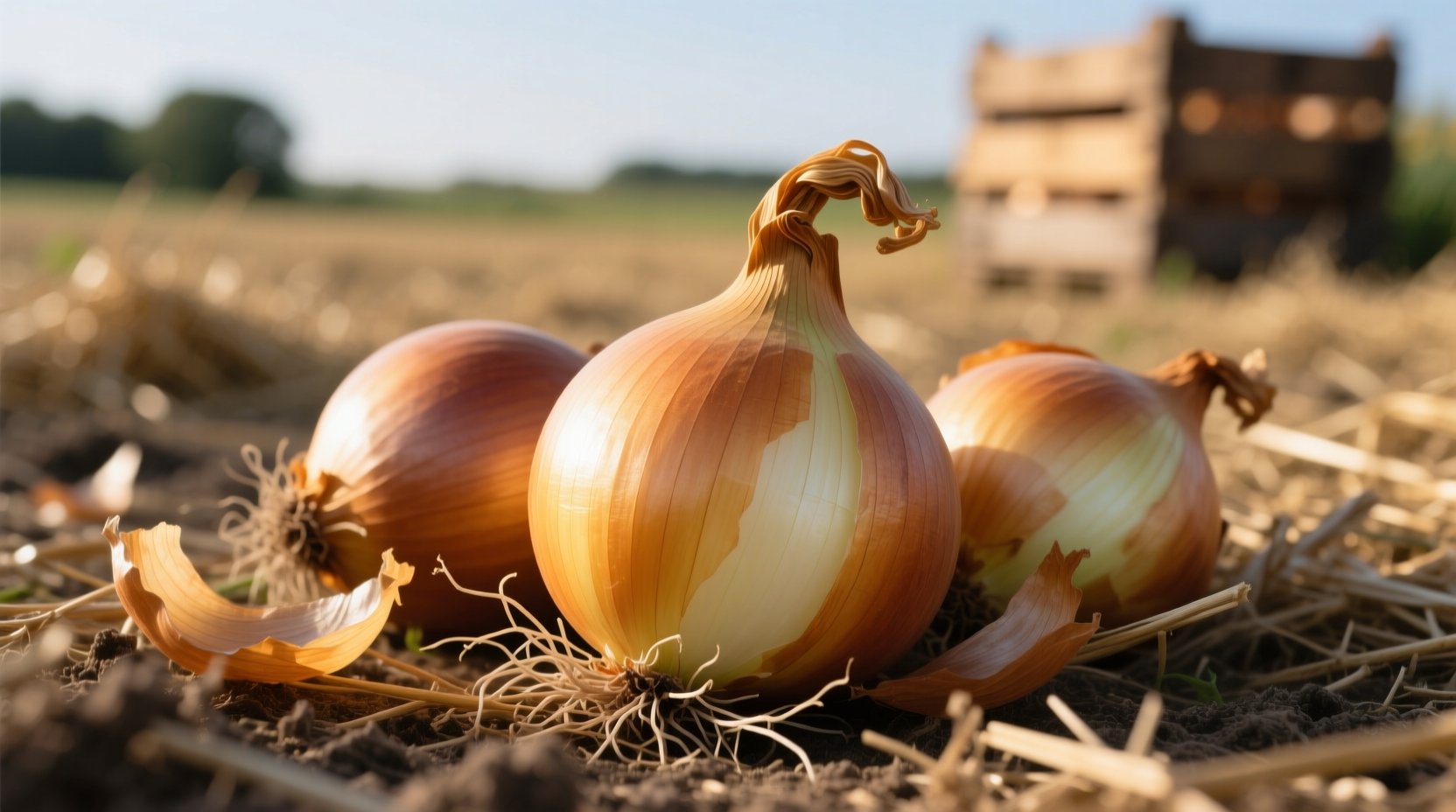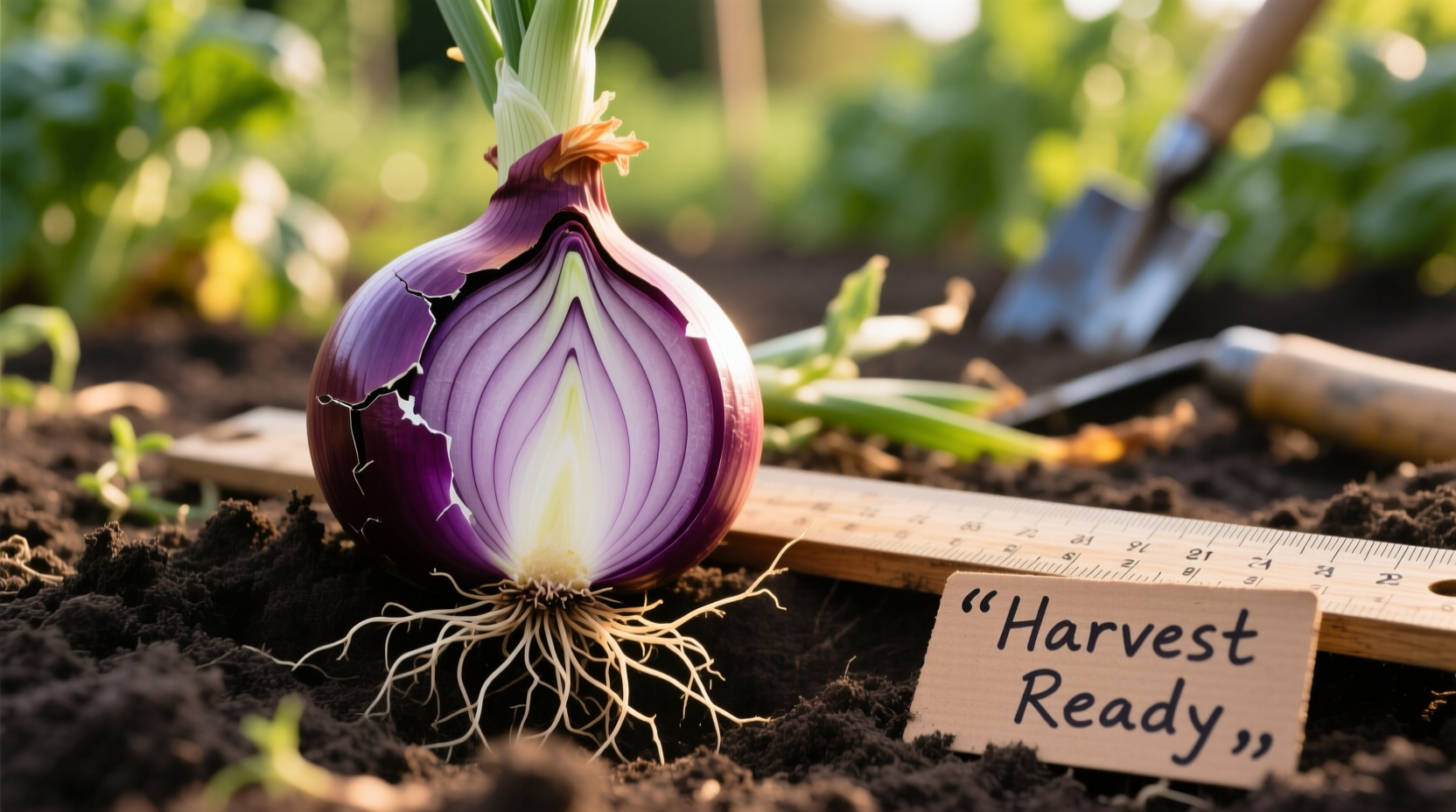Knowing exactly when to harvest onions separates successful gardeners from those who struggle with rotting bulbs or underdeveloped flavors. Get the timing wrong, and you'll face disappointing results regardless of how well you grew them. This guide delivers the precise visual and tactile indicators that signal perfect harvest readiness—no guesswork required.
Why Harvest Timing Determines Your Onion's Fate
Harvest timing directly impacts three critical factors: flavor intensity, storage potential, and bulb size. Onions harvested too early lack full sugar development, resulting in weak flavor and poor storage capability. Those left in the ground too long risk splitting, disease exposure, or premature sprouting.
According to research from the University of Minnesota Extension, onions reach peak maturity when approximately 50-75% of the tops have naturally fallen over. This physiological stage triggers the formation of protective outer layers that enable months of storage.
| Harvest Timing | Flavor Development | Storage Potential | Common Issues |
|---|---|---|---|
| Too Early (before tops fall) | Weak, watery flavor | 1-2 months maximum | Rot during curing, small bulbs |
| Optimal (50-75% tops down) | Full, complex flavor | 6-8 months for storage varieties | None when properly cured |
| Too Late (after complete drying) | Bitter, pungent notes | 3-4 months with higher spoilage risk | Neck rot, sprouting, soil contamination |
Visual Indicators That Signal Harvest Readiness
Don't rely solely on calendar dates—onion maturity depends on variety, climate, and growing conditions. Instead, watch for these definitive physical changes:
The Toppling Test: Nature's Harvest Signal
As onions reach maturity, the green tops naturally fall over at the neck—a process called "toppling." This isn't a sign of disease but a physiological signal that bulb development has completed. When approximately half of your onion patch shows this characteristic lean, harvesting time has arrived.
Neck Softening and Constriction
Examine the neck area where the green tops meet the bulb. Mature onions develop a soft, constricted neck that begins to separate from the bulb. Gently squeeze this area—it should feel noticeably softer than during active growth. This constriction creates the natural seal that prevents moisture loss during storage.
Outer Skin Transformation
The outer layers transform from moist, fleshy wrappers to dry, papery skins. For yellow onions, the skin turns from greenish-white to golden brown. Red varieties develop deep purple-red wrappers, while white onions achieve a crisp ivory finish. The skins should feel dry and rustle when touched.

Harvest Timing by Onion Type and Climate
Understanding your onion variety's day-length requirements prevents harvest timing mistakes. Onions form bulbs in response to specific daylight hours:
- Long-day varieties (14-16 hours of daylight): Best for northern latitudes, typically harvested July-August
- Intermediate-day varieties (12-14 hours): Suitable for middle latitudes, harvested June-July
- Short-day varieties (10-12 hours): Grown in southern regions, harvested April-May
The Oregon State University Extension notes that planting the wrong day-length variety for your region causes poor bulb formation. Southern gardeners who plant long-day varieties often get only green onions without proper bulbs.
Your Step-by-Step Harvesting Process
Follow this sequence for damage-free harvesting that maximizes storage potential:
- Stop watering 7-10 days before harvest—this initiates the curing process while the bulbs remain in the ground
- Lift carefully with a garden fork, inserting it 4-6 inches from the bulb to avoid piercing
- Leave bulbs attached to tops during initial curing—never cut tops before curing completes
- Air-dry immediately in a shaded, well-ventilated area away from direct sun
Curing Onions for Maximum Storage Life
Proper curing transforms field-fresh onions into storage-ready bulbs. This critical 2-3 week process:
- Dries outer skins to protective parchment
- Seals the neck to prevent moisture entry
- Converts sugars for better flavor development
For optimal results, cure onions in temperatures between 75-85°F (24-29°C) with 70-80% humidity. The USDA Agricultural Research Service confirms that onions cured under these conditions develop significantly thicker protective layers, reducing storage losses by up to 40% compared to improperly cured bulbs.
Troubleshooting Common Harvesting Mistakes
Even experienced gardeners encounter these harvest challenges:
Harvesting During Wet Weather
If rain is forecast, harvest anyway but increase airflow during curing. The University of Wisconsin Horticulture Department recommends placing wet-harvested onions in single layers with fans circulating air until skins become dry to the touch.
Dealing with Split Bulbs
Onions harvested too late often develop splits from summer thunderstorms. Use split bulbs immediately—they won't store well. Prevent future splits by maintaining consistent soil moisture during bulb formation and harvesting promptly after tops fall.
Storage Guidelines for Your Harvested Onions
After proper curing, store onions in mesh bags or wooden crates in a cool, dark place with temperatures between 32-45°F (0-7°C) and humidity around 65-70%. Under these conditions, storage varieties like 'Copra' or 'Stuttgarter' will remain crisp and flavorful for 6-8 months.
Check your stored onions monthly, removing any showing signs of softness or sprouting. The National Onion Association reports that regular inspection reduces total storage losses by 15-25% compared to "set and forget" approaches.











 浙公网安备
33010002000092号
浙公网安备
33010002000092号 浙B2-20120091-4
浙B2-20120091-4